The Best Accessories for Vinyl Records: Start getting more from your setup today with these essential tools for record collectors.
One great aspect of vinyl record collecting is the countless improvements and upgrades you can make to build and improve on any setup.
No matter how much you spent on your deck, there are numerous vinyl record accessories that can make a significant difference to your Hi-Fi experience.
Some accessories for vinyl records are essential if you want your records to last a lifetime and beyond. Thankfully, most of the basics won’t break the bank, and you’ll thank yourself in years to come when your records still sound as superb as the day you first sat them down on your turntable.
What are the top vinyl record accessories we deem essential for any collector? Keep scrolling below to see what makes the A-list.
Must-Have Cleaning Tools
Cleaning is a fundamental aspect of vinyl care. Dust and debris can accumulate on records and styluses, leading to playback issues. Here are some essential cleaning tools every collector should have:
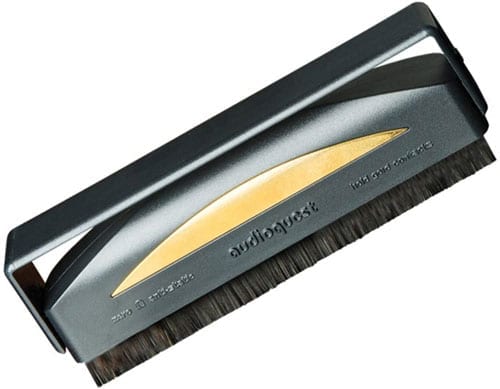
Carbon Fiber Record Brush
We recommend a carbon fiber record cleaning brush in every article on record cleaning we’ve ever published. Why? Because it’s absolutely the first essential step when cleaning a record. Not only should you use the brush before and after each playback on both sides to prevent dust build-up over time. But, you absolutely must use a carbon brush before any wet cleaning process.
Proceeding directly to wet cleaning your records will only push all of this loose dust into the grooves, potentially making the cleaning process more difficult, or worse, making otherwise easy to remove surface dust stubborn and challenging to clean.
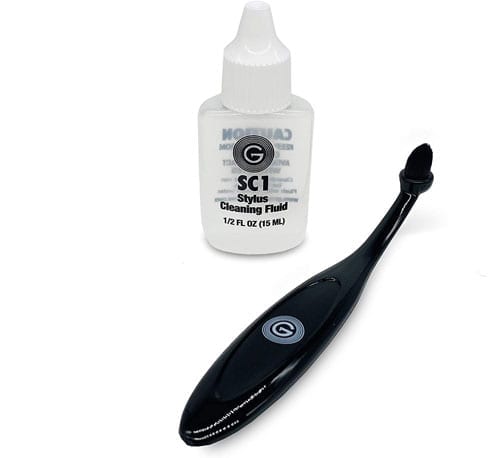
Stylus Cleaning Kit
The carbon brush mentioned above will minimize dust build-up on your stylus, but it’s inevitable that dust and gunk will occasionally materialize on the stylus tip. Cleaning the stylus regularly with a little cleaning fluid will take off all that nasty stuff. We use the GrooveWasher SC1 Stylus Cleaning Kit.
You can use the ergonomic, angled brush both dry and with a little fluid. If you want to be really disciplined, I recommend using the brush dry after every record side, and then use with a little fluid every few records (or whenever you see dust build-up).
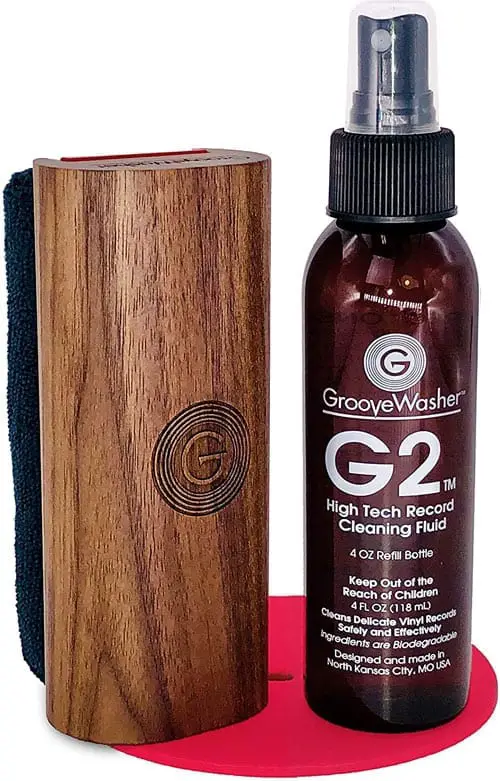
Record Cleaning Kit
All records occasionally benefit from a wet clean, as even the most disciplined of collectors will find their records develop a few pops or clicks here and there. In the case of used records bought from your local record store or online, these will undoubtedly require cleaning before you enjoy them.
Again, GrooveWasher make an essential kit for hand-cleaning vinyl records that is both affordable and highly effective. Their G2 record cleaning fluid and the new, stronger G3 formula are the best record cleaning fluids we’ve tested. Safe on your records, yet highly efficient when it comes to removing oils from fingerprints, stubborn dust and grime.
As a Sound Matters reader, you can grab your record cleaning kit for 10% less. Simply use the code SOUNDMATTERS10 at groovewasher.com
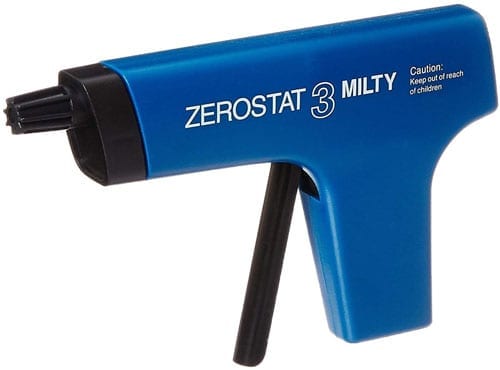
Milty Zerostat
This vinyl accessory is a must if you live in a very dry climate where static can cause real headaches for record collectors. You can, of course, eliminate static charge from your records by wet cleaning them, but you don’t want to over-clean your records and should use the least abrasive method wherever possible. If the record is fairly clean, but is clinging to the sleeve and turntable matt, you can use the Milty Zerostat anti-static gun to neutralize static.
This anti-static gun incorporates a Piezo Crystal device that produces negative and positive ions that couple with the positive and negative static charges on the record surface to neutralize static. It sounds like black magic, but it works.
Check out our full review here
Protection & Storage Accessories
Protecting your records is just as important as cleaning them. Here are some essential protective accessories to consider:
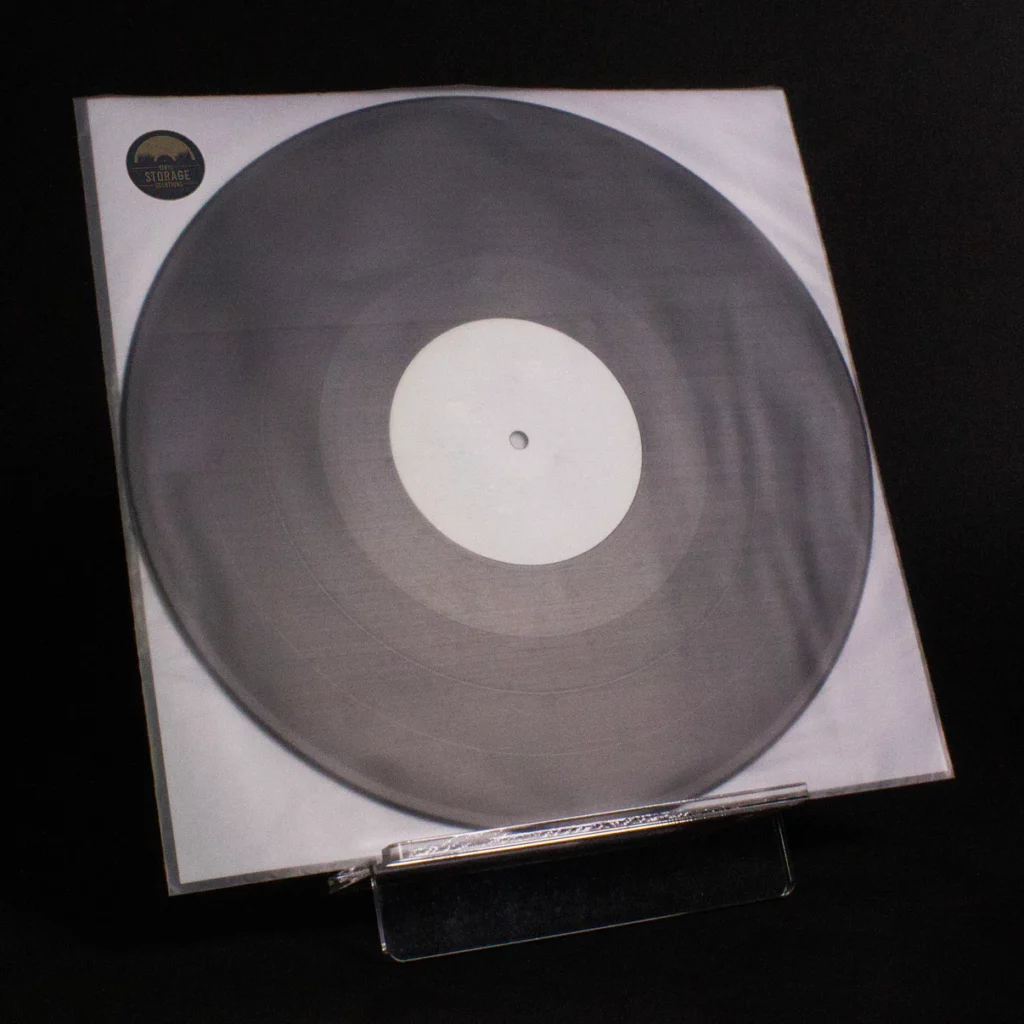
Quality Inner Sleeves
Don’t underestimate the importance of inner sleeves. If you’re still using the flimsy paper sleeves that come with most records, consider upgrading to higher quality options. Basic paper sleeves can scratch the record surface over time and leave behind annoying paper particles.
The MoFi archival quality inner sleeves have set the standard for years, and are readily available on Amazon.
Recently, however Vinyl Storage Solutions (VSS) have raised the bar with a thicker, more durable inner sleeve based on the original MoFi-style design. These feel more premium and are less likely to crumple and crease as you pull the record in and out of the outer jacket.
Sound Matters readers can enjoy 10% off at vinylstoragesolutions.ca using the code SOUNDMATTERS10.
Outer Record Sleeves
While inner record sleeves are essential for preserving your actual records, outer sleeves are also critical if we want to preserve the outer jacket and beautiful artwork.
Again, I highly recommend Vinyl Storage Solutions as linked above for the quality and clarity of the outer record sleeves.
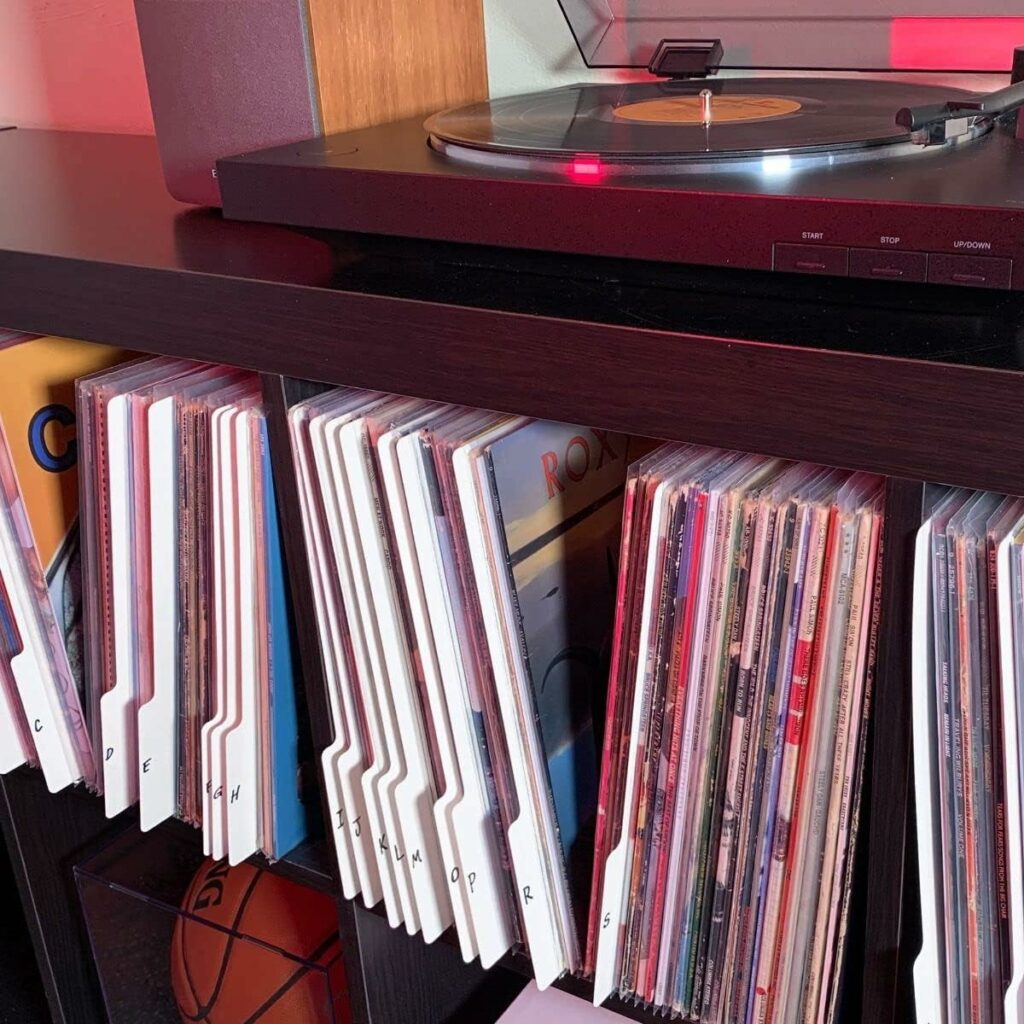
Record Dividers
There’s nothing worse than not being able to find the right record. Endlessly hunting through the chaos of artists, genres and eras, you look, and you look again. Then after what feels like the millionth time, you find it right under your nose.
By investing in some record storage dividers, you’ll easily organize your collection and save more time for the important things in life, like, you know… listening to records.
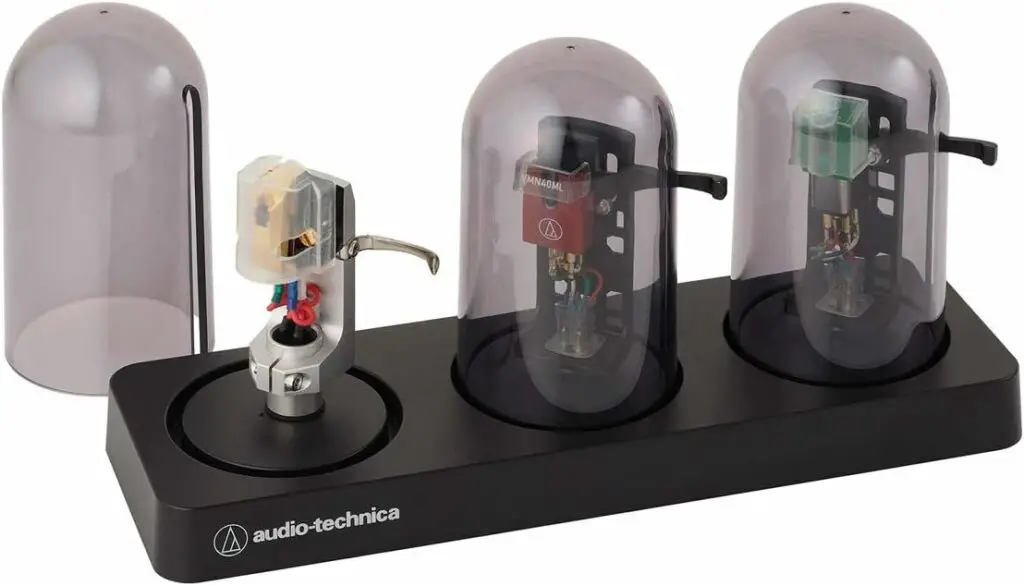
Cartridge Display Case
One of the first accessories to consider is the Audio Technica Cartridge Case. This well-designed case allows you to safely store and display up to three detachable head shells. Keeping your cartridges stored properly is crucial. If left lying around, they can quickly gather dust and become damaged. The case features a neat little slat in the cover, allowing the finger lift to fit perfectly and keeping the cartridges dust-free.
As your collection of cartridges grows, you may find that one case isn’t enough. Investing in multiple cases can help you keep everything organized and protected.
Setup Tools for Optimal Performance
Proper setup is essential for achieving the best sound from your vinyl. Here are tools that can help ensure your turntable is set up correctly:
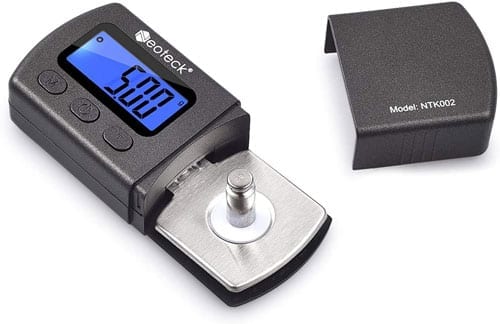
Digital Tracking Force Guage
All phono cartridges have a tracking force range and an optimal tracking force for the best performance and low record wear. You could balance your tonearm the old-fashioned way by getting the arm to float above the platter and then using the counter-weight dial to adjust for tracking force, but this isn’t 100% accurate. A better way is to use the first method to get as close as possible and then fine-tune until you get the perfect tracking force using a digital tracking force gauge. We like the Neoteck model.
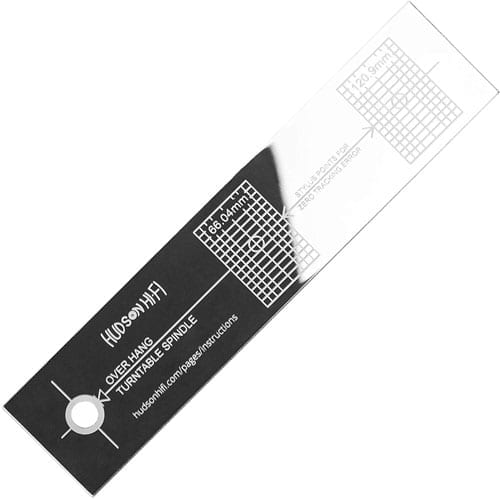
Cartridge Alignment Protractor
When upgrading or changing your cartridge, a cartridge alignment protractor is necessary for proper setup. A mirrored protractor can help reduce parallax errors, ensuring accurate alignment. This tool is essential for achieving the best audio quality from your records.
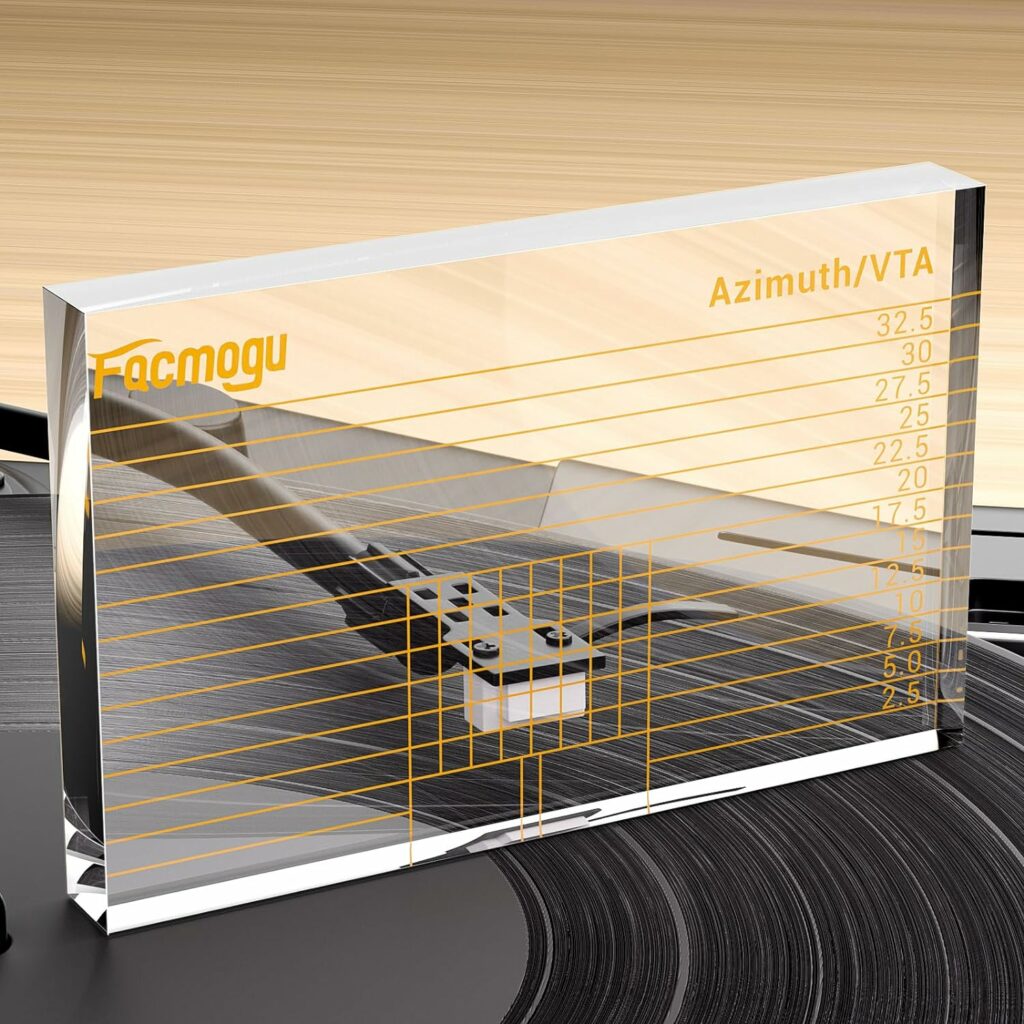
VTA/Azimuth Block
Adjusting the vertical tracking angle (VTA) and azimuth of your tonearm is essential for achieving optimal sound quality. A simple VTA/Azimuth block can make these adjustments easier. Most experts agree that a good starting point is to keep the tonearm parallel to the platter surface.
For those who want to delve deeper into stylus rake angle adjustments, this block serves as a basic guide to ensure everything is set up correctly.
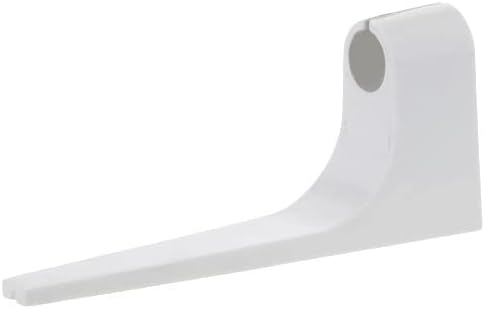
Overhang Gauge
When installing cartridges on head shells, ensuring the correct overhang distance is essential for optimal performance. If you have a Technics-style turntable, the overhang distance is typically around 52 millimeters. To make installation easier, consider using a dedicated overhang gauge from Technics. This tool sits on the base of the head shell, allowing you to achieve the correct measurement effortlessly.
If you don’t have access to a gauge, a set of calipers can also be useful. Just remember to check your turntable’s specifications to ensure you’re using the correct overhang distance.
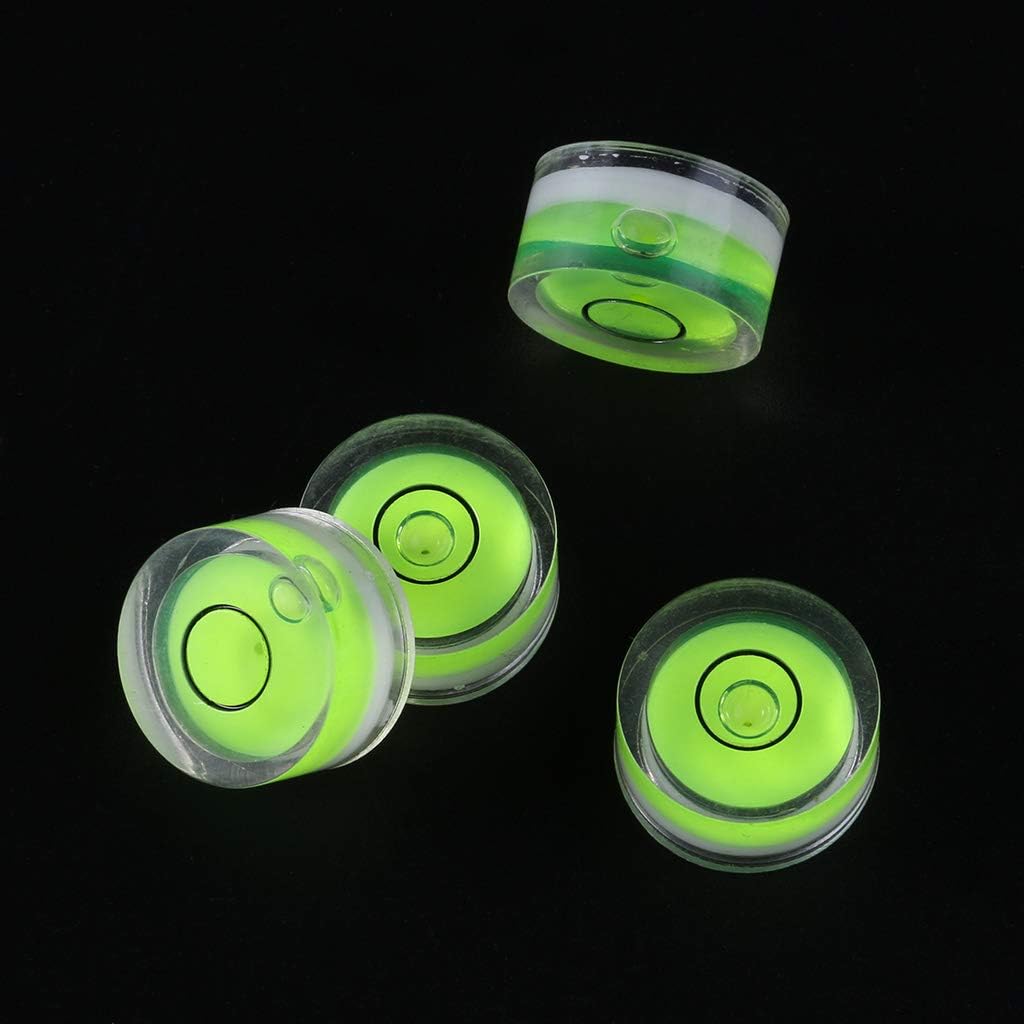
Spirit Bubble Level
Using a spirit bubble level is a straightforward way to check if your turntable is perfectly level. This is crucial as an unlevel turntable can affect playback and sound quality. It’s a small investment that can lead to significant improvements in your listening experience.
Essential Playback Tools
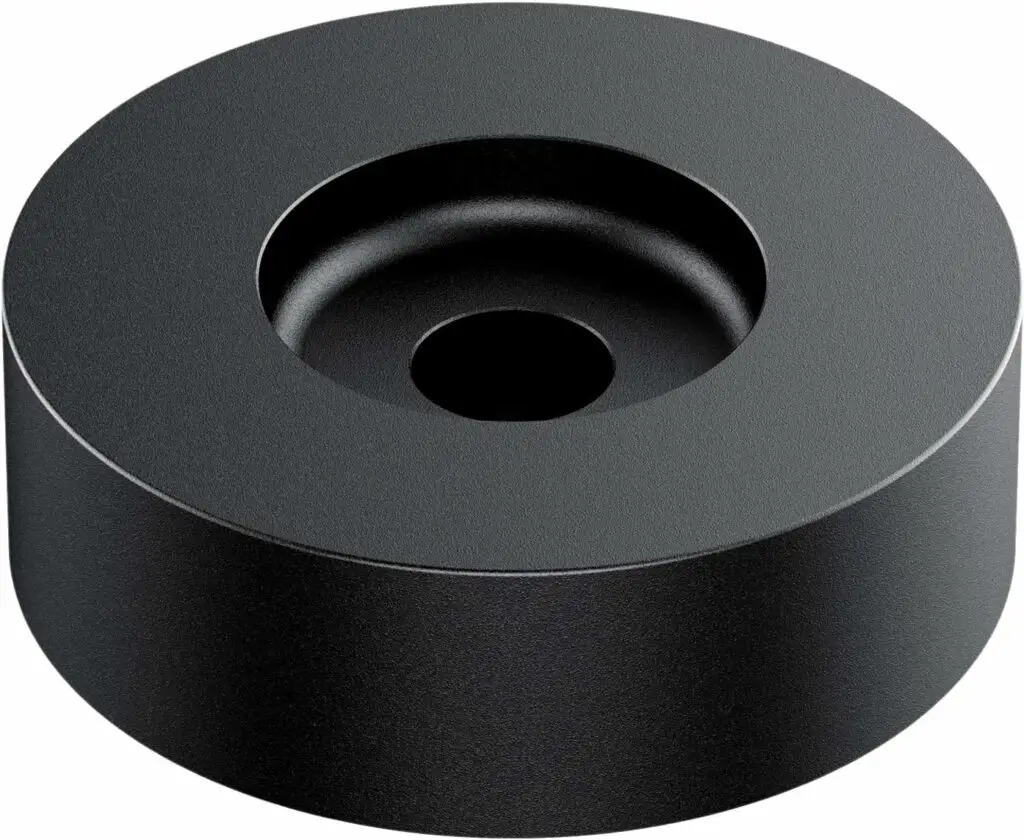
7 Inch 45 Adaptor
If you collect older 45 rpm 7-inch singles, there’s a good chance many of them were manufactured to play on the much larger 1.5″ RCA record player spindles. To play these records on a modern turntable, you will need a 45rpm record adapter (otherwise known as a record puck) to adapt the center of the record accordingly.
We recommend this good-quality aluminum adaptor that will last.
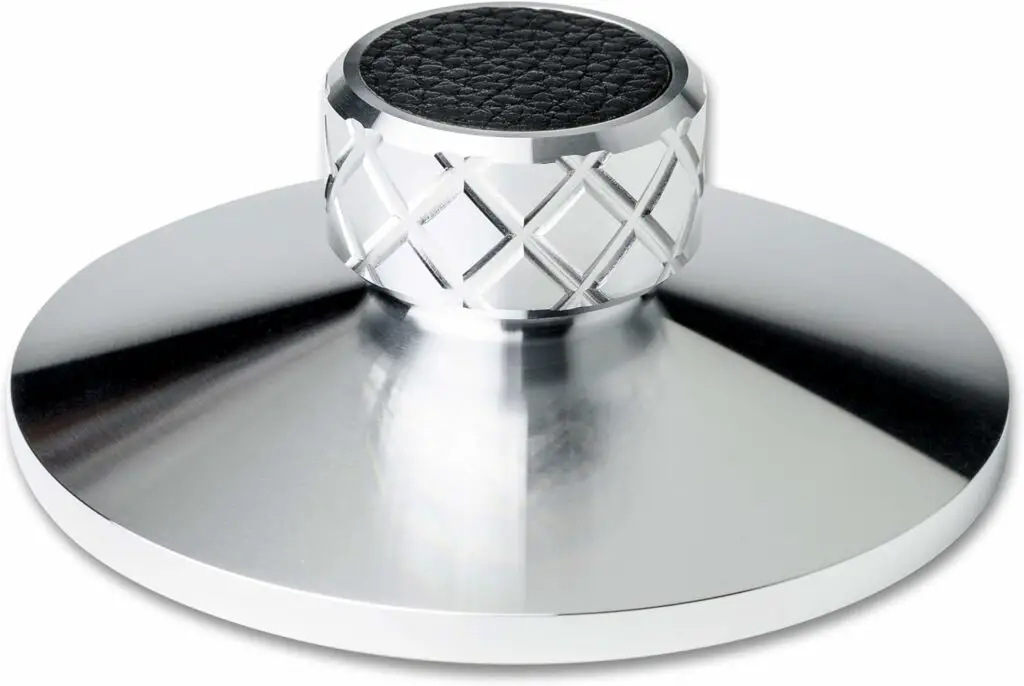
A Record Weight or Clamp
Clamps and weights optimize record playback by improving contact with the turntable platter. Weights also add mass, which can help with speed consistency. In the case of mild warps, they can help mitigate the issue and improve tracking. Weights sit on the record spindle; record clamps are different in that you physically clamp the record to your platter using a screw-based record clamp that also sits on the center spindle.
I recommend the Pro-Ject record clamp pictured above.
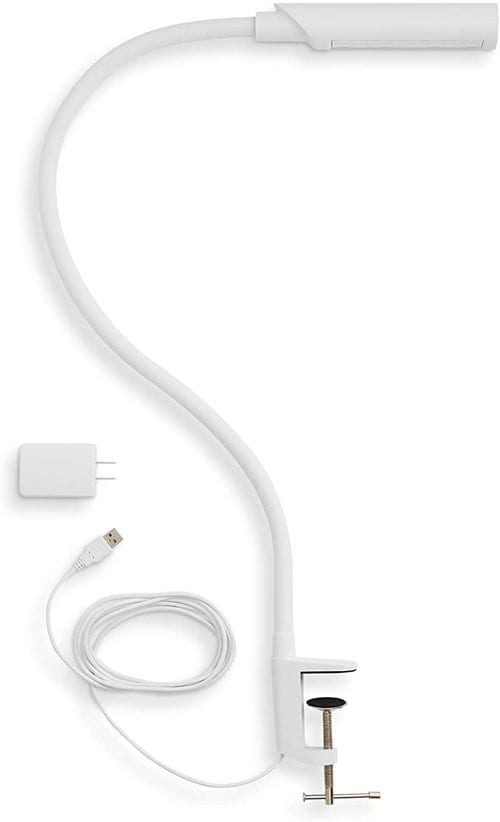
LED Turntable Light
LED lights are the perfect turntable companion — particularly if your listening space is in a low-light environment, such as a basement.
Besides adding light and atmosphere, the right LED light can also make record inspection much easier. A good quality LED light will highlight the condition of your record surface, including how clean it is or how much surface dust needs removing. Purveyors of collectable original pressings will also enjoy how much easier it is to read the dead-wax markings as key indicators for those on the hunt for a particular copy of a classic album.
I use the Uberlight Flex from Reliable. It’s the best-LED light for turntable use out there.
Check out our full product review here
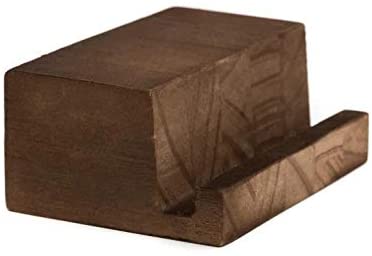
Now Playing Vinyl Stand
The aesthetic of vinyl is half of the appeal. Not only do I like to have somewhere safe to put my record sleeves while playing the album, but it’s nice to display the art, or even showcase to friends any family so they know what’s currently spinning on the deck.
This solid wood record holder blends nicely into your living space and is one of the best vinyl record accessories for anyone wanting to appreciate the art of a record.
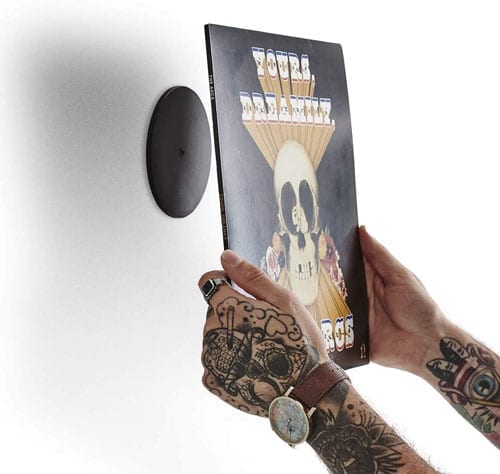
Vinyl Wall Displays
Last, but by no means least, are these superb magnetic vinyl wall display adapters from Twelve-Inch. Every listening room needs some vinyl on the wall. After all, many of our favorite album covers are works of art in their own right. The beauty of these magnetic display designs is that you can pop the vinyl on and off the wall without needing to remove it from a frame. The vinyl you display remains accessible and playable.
As a Sound Matters reader, you can enjoy 10% off Twelve Inch products when buying directly from twelve-inch.com. Simply use the code: SOUNDMATTERS10 on checkout.
Check out our full review here
Additional Helpful Accessories
Beyond the essentials, there are a few additional accessories that can enhance your vinyl experience:
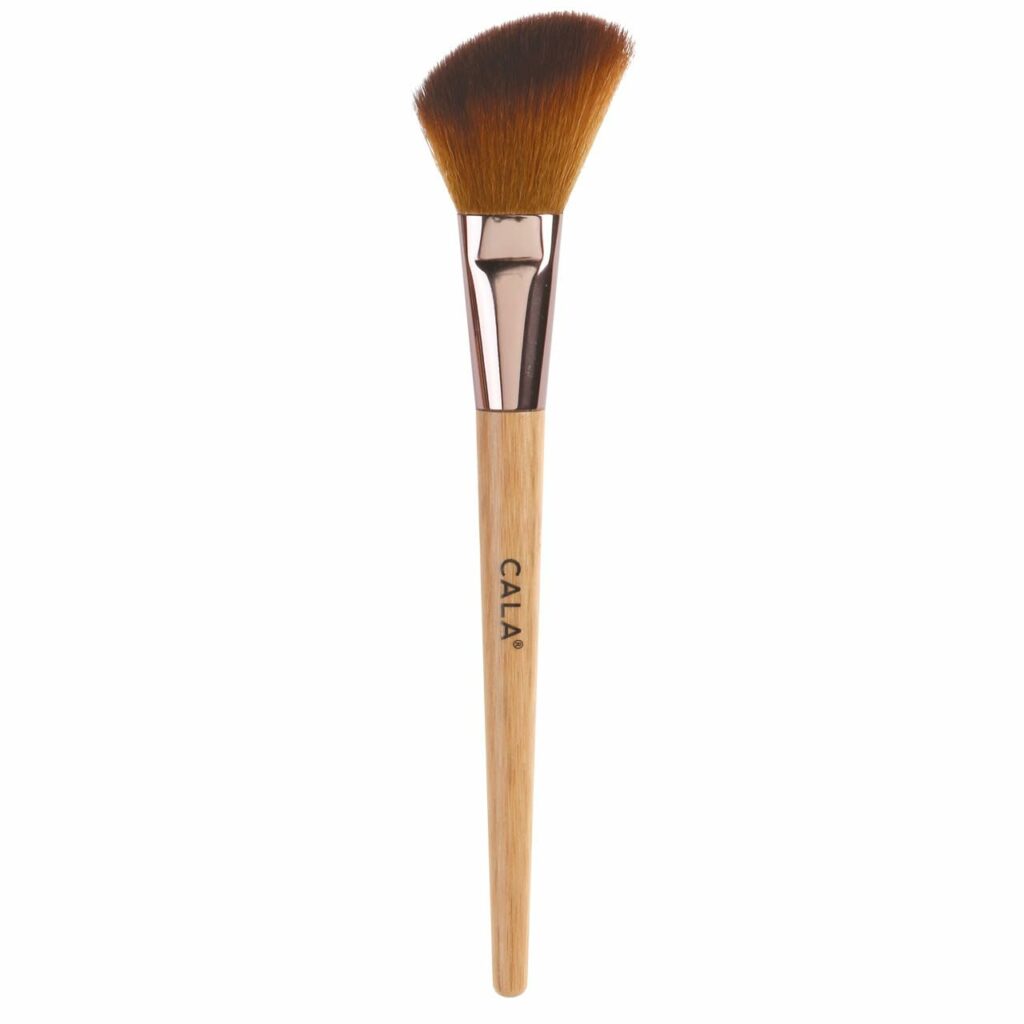
A Makeup Brush For Dusting
This next recommendation is a little left field, but I highly recommend picking up a simple makeup brush, yes, that’s right, a makeup brush.
A simple makeup brush can be an excellent tool for dusting your turntable and other audio equipment. These brushes are gentle enough to clean delicate surfaces without causing damage, helping you maintain a clean and dust-free setup.
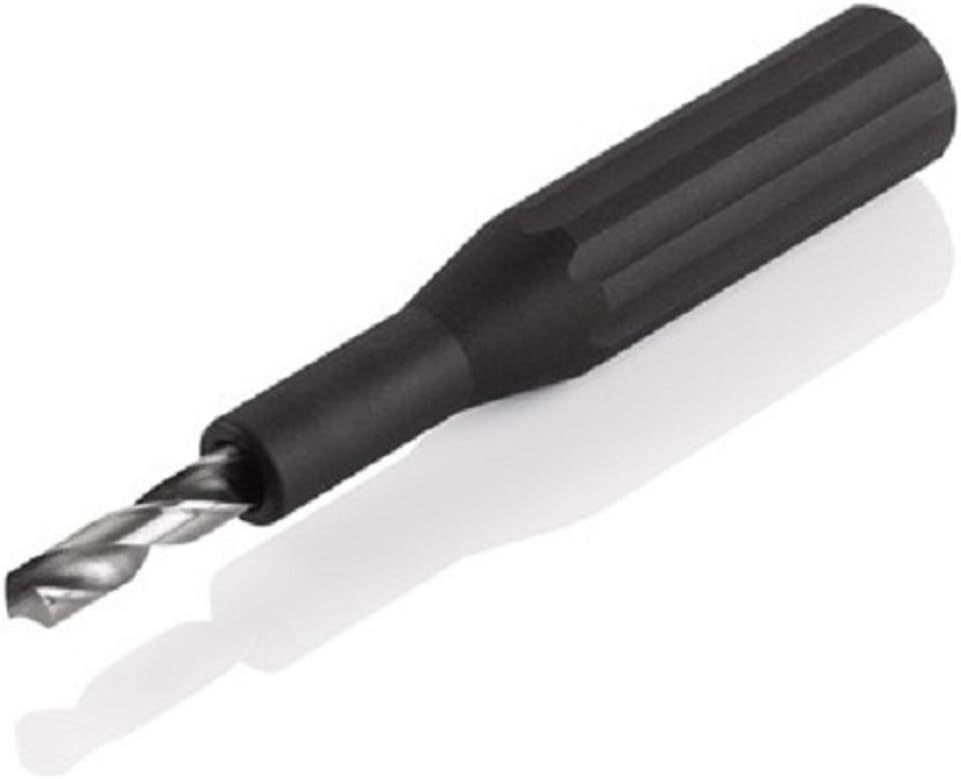
LP Drill
Have you ever struggled with records that have center holes that are too tight? The LP drill from Clearaudio is designed to fix this issue, allowing records to fit comfortably on your turntable. While this tool can be a bit pricey, it’s an excellent investment for anyone who frequently encounters tight-fitting records.
If you’re looking for a more budget-friendly alternative, you can find a 7.3 millimeter drill bit on Amazon for less than ten dollars. Some users even recommend using a pen or pencil to slightly widen the hole, though this method’s effectiveness will depend on the severity of the issue.
Got any vinyl record accessories you would recommend to Sound Matters readers? Let us know in the comments below.

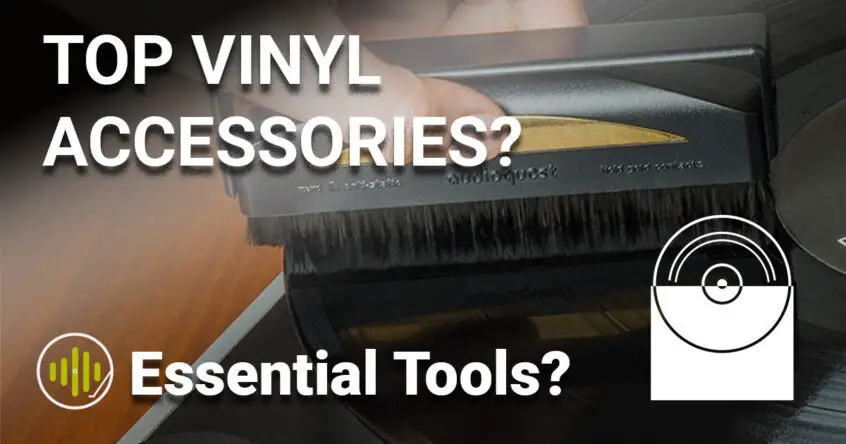


I personally never found any advantage using a weight, my turntable speed is really good; and I also don’t have even mildly warped records, but even if I did, the warp usually gets more pronounced on the outside portion of the record where I can’t see the weight doing a darn thing for it. If I ever get a warped record, I would rather just buy another record and replace it.
While the digital needle scale is cheap, wouldn’t a regular digital scale do the same thing?
But overall, the article was good, some of it was for people who might like to display a record, I don’t do that, just clutter up walls. Or a vinyl stand for me would also be useless, I don’t need something to show me, or others, what’s playing, I kind of know that by looking at the cover before I took it out and by listening to what’s playing! But that’s just me.
I have most of these, the one that I see little to no benefit to is the record weight. I use it, and have tried both in a blind test and in an instrument test to show a difference no such luck. One you didn’t’t mention and I have debated about is an isolation device to sit my turntable on. Has anyone used one?
The Elite alignment gauge is the only one to have, it tells you the actual tracking error across the record. From there you can optimise the null points, and the hideous increase of tracking error at the end of side. You do need the manual that goes qith this for easy set up.
Also you should mention the Vac-O-Rec which is now discontinued but which does a great job of removing static and dust before you put a record away. It is not a cleaner
Finally a big shout out for the Loricraft record cleaner, a single point wet vacuum cleaner which really digs the dirt out of the groove. Mine is so old it does not have a model number
Keep Spinning
Alan
Cool. Thanks Alan. I’ll bet there are a still a few of those Vac-O-Rec devices on ebay for those who want to hunt one down.
Wow Marc, you’ve pretty much covered all the basis. There is one thing however that I like to keep handy. I don’t quite know the actual name of it, but it is a cone-shaped sanding attachment normally to be used on a die grinder. I find these to be the perfect tool when I come across a record that has a very tight hole and won’t fit the spindle very easily. You poke the cone through the hole and give it a few twists with very light pressure. Does the trick beautifully and won’t take too much off, whereas a round metal file or a pencil seem a little precarious to me. Cheers on another great article.
Thanks Paul. That is a great tip. Please do share a link if you can. It’s so annoying when you get a record like that; I’ve had some records so tight it feels like the record could snap pulling it off!
Here they are. Hard to find just one, unfortunately.
https://www.amazon.com/Benchmark-Abrasives-Tapered-Cartridge-Aluminum/dp/B08YR4P4FB/ref=sr_1_32?c=ts&dchild=1&keywords=Abrasive%2BCartridge%2BRolls&qid=1625323949&refinements=p_n_feature_eight_browse-bin%3A4539436011&s=industrial&sr=1-32&ts_id=256169011&th=1
Ah, yes, I see. Neat idea.